CUPRA Tavascan vs VW ID.3 – Differences & prices compared
Compare performance, boot space, consumption and price in one view.
Find out now: which car is the better choice for you – CUPRA Tavascan or VW ID.3?
The CUPRA Tavascan (SUV) comes with a Electric engine and Automatic transmission. In comparison, the VW ID.3 (Hatchback) features a Electric engine with Automatic transmission.
When it comes to boot capacity, the CUPRA Tavascan offers 540 L, while the VW ID.3 provides 385 L – depending on how much space you need. If you’re looking for more power, decide whether the 340 HP of the CUPRA Tavascan or the 326 HP of the VW ID.3 suits your needs better.
In terms of consumption, the values are 15.90 kWh per 100 km for the CUPRA Tavascan, and 14.50 kWh for the VW ID.3.
Price-wise, the CUPRA Tavascan starts at 45700 £, while the VW ID.3 is available from 28600 £. Compare all the details and find out which model fits your lifestyle best!
In the competitive realm of electric vehicles, the CUPRA Tavascan stands out with its bold design and sporty performance, appealing to those who crave a dynamic driving experience. In contrast, the VW ID.3 offers practicality and innovative technology, making it an excellent choice for everyday commuters. Ultimately, while both models provide impressive electric capabilities, the Tavascan leans towards performance enthusiasts, while the ID.3 caters to a more mainstream audience.
CUPRA Tavascan
The CUPRA Tavascan represents a bold step forward in the realm of electric vehicles with its striking design and dynamic performance. As the marque's first all-electric SUV, it combines athletic aesthetics with a commitment to sustainability. Inside, the vehicle offers a sophisticated and connected driving experience, ensuring that technology and comfort go hand in hand.
details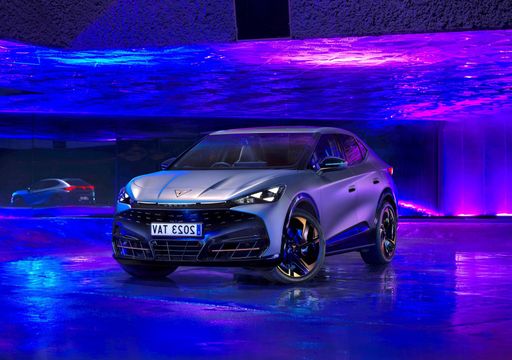 @ seat-mediacenter.com
@ seat-mediacenter.com
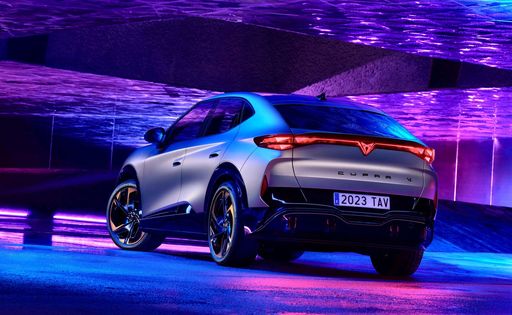 @ seat-mediacenter.com
@ seat-mediacenter.com
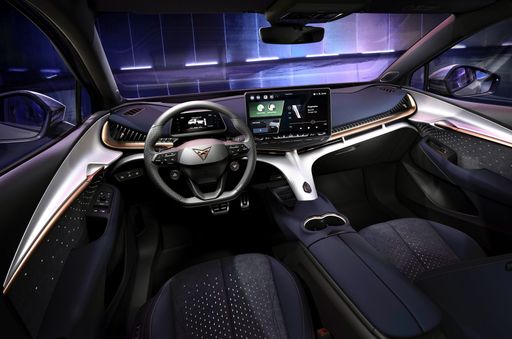 @ seat-mediacenter.com
@ seat-mediacenter.com
VW ID.3
The VW ID.3 represents Volkswagen's entry into the world of electric vehicles, offering a modern design that combines functionality with sustainability. Inside, you'll find a spacious and tech-forward interior, providing a comfortable driving experience while maintaining a focus on environmentally friendly materials. The ID.3's performance delivers a smooth and responsive feel on the road, making it a strong contender in the growing electric car market.
details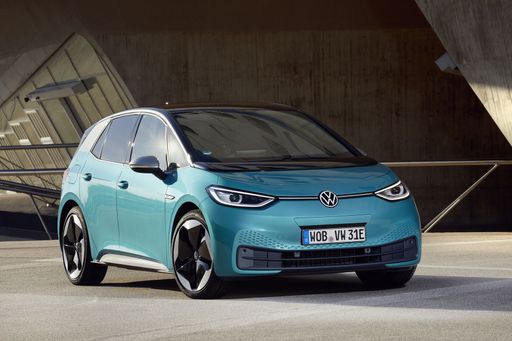 @ Volkswagen
@ Volkswagen
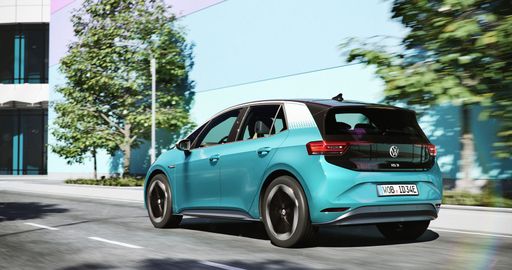 @ Volkswagen
@ Volkswagen
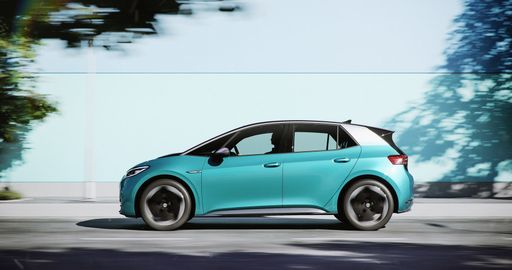 @ Volkswagen
@ Volkswagen
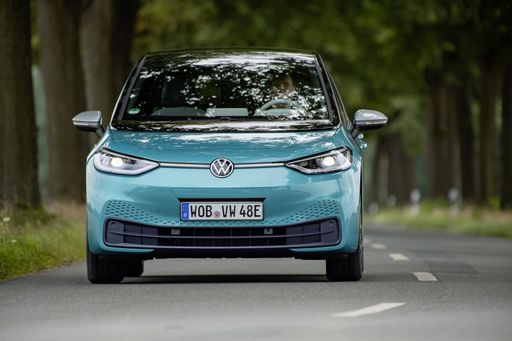 @ Volkswagen
@ Volkswagen
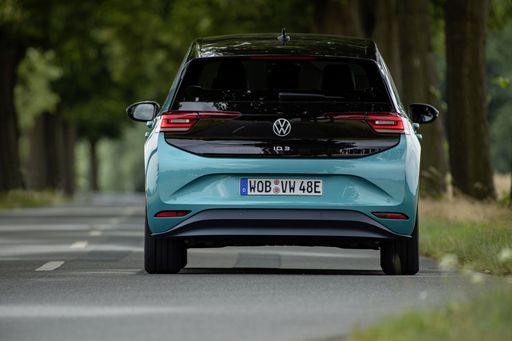 @ Volkswagen
@ Volkswagen
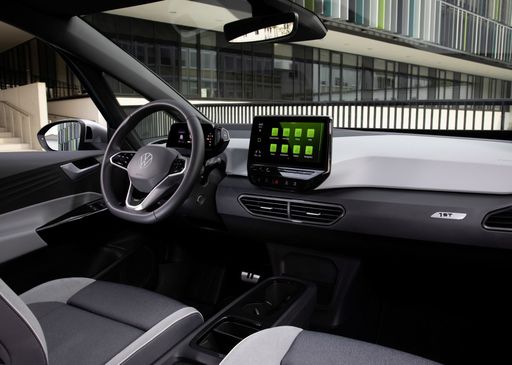 @ Volkswagen
@ Volkswagen
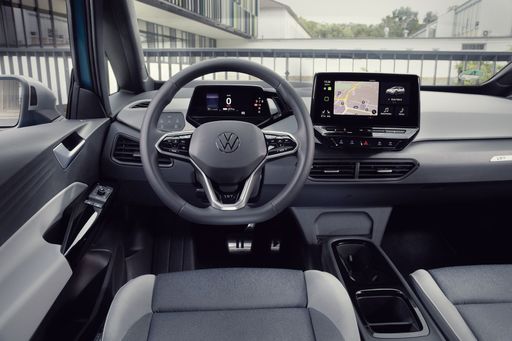 @ Volkswagen
@ Volkswagen
An Electrifying Showdown: CUPRA Tavascan vs VW ID.3
The electric vehicle (EV) landscape is rapidly evolving, and with automakers racing to deliver innovative models, the CUPRA Tavascan and the VW ID.3 claim their respective places in this electrifying arena. Both vehicles offer unique features and cutting-edge technology, but how do they compare? Let's dive into the details.
Body Type and Design
The CUPRA Tavascan is an SUV, boasting a commanding presence with its aggressive styling and muscular stance. Measuring 4644 mm in length and 1861 mm in width, it offers ample space while maintaining a sporty aesthetics that's synonymous with the CUPRA brand.
In contrast, the VW ID.3 takes on the hatchback form, prioritizing compactness and practicality for urban driving. Its dimensions are more modest, measuring 4264 mm in length and 1809 mm in width. Despite the smaller size, the ID.3's design features a minimalist approach that enhances aerodynamics while maximizing interior space.
Performance and Powertrain
Under the hood, the CUPRA Tavascan offers impressive performance with power options ranging from 286 HP to 340 HP. With rear-wheel or all-wheel drive configurations, it achieves 0-100 km/h acceleration in as little as 5.5 seconds, making it a spirited SUV. The Tavascan also boasts a torque output of up to 679 Nm, ensuring robust performance on any terrain.
The VW ID.3, while slightly less powerful with options from 170 HP to 326 HP, still brings a compelling driving experience. The ID.3 can accelerate from 0-100 km/h in about 5.7 seconds for its most powerful variant, showcasing an agile performance. With a torque maximum of 545 Nm, it primarily operates on rear-wheel drive, which contributes to its balanced handling.
Electric Range and Efficiency
Range anxiety is a common concern for potential EV buyers, but both models rise to the challenge. The CUPRA Tavascan excels with an electric range of up to 569 km, powered by a 77 kWh battery. This impressive efficiency is complemented by a consumption rate of 15.1 to 16.5 kWh per 100 km, depending on the variant.
The VW ID.3 also offers strong range performance, reaching up to 604 km with its most efficient battery option. With battery capacities ranging from 52 kWh to 79 kWh and consumption rates varying between 14.5 to 15.8 kWh per 100 km, the ID.3 provides excellent efficiency across its different configurations.
Interior Comfort and Technology
Inside the CUPRA Tavascan, the focus is on sportiness combined with luxury. With seating for five and a trunk capacity of 540 liters, it provides generous space for both passengers and cargo. The interior is equipped with modern technology features, including a digital cockpit and advanced infotainment system tailored for performance enthusiasts.
The VW ID.3, meanwhile, features a spacious interior despite its smaller footprint. It also seats five and has a trunk capacity of 385 liters. The ID.3 is packed with user-friendly technology, highlighted by its intuitive touchscreen interface and various driver-assistance features. The overall design emphasizes sustainability, with eco-friendly materials used throughout the cabin.
Conclusion: Which EV Reigns Supreme?
Choosing between the CUPRA Tavascan and the VW ID.3 ultimately comes down to personal preference and driving needs. The Tavascan is ideal for those seeking performance and a sporty, rugged design, while the ID.3 appeals to buyers looking for efficiency, practicality, and a modern aesthetic.
With both vehicles representing the future of electric mobility, enthusiasts are sure to be excited about what lies ahead in the world of electric cars. Whether you prefer the power-packed SUV or the nimble hatchback, the CUPRA Tavascan and VW ID.3 each offer exceptional value in the EV market.

|

|
|
|
|
Costs and Consumption |
|
|---|---|
|
Price
45700 - 49600 £
|
Price
28600 - 49300 £
|
|
Consumption L/100km
-
|
Consumption L/100km
-
|
|
Consumption kWh/100km
15.9 - 17.1 kWh
|
Consumption kWh/100km
14.5 - 15.8 kWh
|
|
Electric Range
513 - 553 km
|
Electric Range
383 - 605 km
|
|
Battery Capacity
77 kWh
|
Battery Capacity
52 - 79 kWh
|
|
co2
0 g/km
|
co2
0 g/km
|
|
Fuel tank capacity
-
|
Fuel tank capacity
-
|
Dimensions and Body |
|
|---|---|
|
Body Type
SUV
|
Body Type
Hatchback
|
|
Seats
5
|
Seats
5
|
|
Doors
5
|
Doors
5
|
|
Curb weight
2178 - 2273 kg
|
Curb weight
1787 - 1993 kg
|
|
Trunk capacity
540 L
|
Trunk capacity
385 L
|
|
Length
4644 mm
|
Length
4264 mm
|
|
Width
1861 mm
|
Width
1809 mm
|
|
Height
1597 mm
|
Height
1564 mm
|
|
Payload
507 - 522 kg
|
Payload
437 - 473 kg
|
Engine and Performance |
|
|---|---|
|
Engine Type
Electric
|
Engine Type
Electric
|
|
Transmission
Automatic
|
Transmission
Automatic
|
|
Transmission Detail
Reduction Gearbox
|
Transmission Detail
Reduction Gearbox
|
|
Drive Type
Rear-Wheel Drive, All-Wheel Drive
|
Drive Type
Rear-Wheel Drive
|
|
Power HP
286 - 340 HP
|
Power HP
170 - 326 HP
|
|
Acceleration 0-100km/h
5.5 - 6.8 s
|
Acceleration 0-100km/h
5.7 - 8.2 s
|
|
Max Speed
180 km/h
|
Max Speed
160 - 200 km/h
|
|
Torque
545 - 679 Nm
|
Torque
310 - 545 Nm
|
|
Number of Cylinders
-
|
Number of Cylinders
-
|
|
Power kW
210 - 250 kW
|
Power kW
125 - 240 kW
|
|
Engine capacity
-
|
Engine capacity
-
|
General |
|
|---|---|
|
Model Year
2024
|
Model Year
2024 - 2025
|
|
CO2 Efficiency Class
A
|
CO2 Efficiency Class
A
|
|
Brand
CUPRA
|
Brand
VW
|
CUPRA Tavascan
Introducing the CUPRA Tavascan: The Future of Electric SUVs
The automotive industry is witnessing a revolution, and at the forefront is the CUPRA Tavascan, an electric SUV that promises to reshape the landscape of sustainable driving. As a brand under the umbrella of the renowned SEAT, CUPRA has rapidly established itself with models that combine dynamic design with cutting-edge technology. Let us delve into the details of the Tavascan, an embodiment of innovation and performance.
Powertrain and Performance
The CUPRA Tavascan impresses with its electric powertrain offerings. It is available in two versions, catering to different driving preferences. With power outputs ranging from 286 to 340 PS, the Tavascan ensures an electrifying drive on both rear-wheel and all-wheel-drive configurations. Regardless of the choice, instant torque and seamless acceleration allow it to reach 0-100 km/h in just 5.5 to 6.8 seconds.
Under the hood lies a sophisticated 77 kWh battery pack, ensuring a driving range between 521 and 568 km on a single charge. The efficiency ratings are noteworthy, with energy consumption falling between 15.2 to 16.5 kWh/100 km, making it one of the more efficient options in its category.
Leading-Edge Technology and Features
The Tavascan is designed with the modern driver in mind, integrating state-of-the-art technology. Inside, drivers and passengers will experience a premium digital cockpit, where a large infotainment system, customisable ambient lighting, and cutting-edge connectivity options create a seamless blend of luxury and functionality.
In terms of safety and driver assistance systems, the Tavascan does not disappoint. It includes advanced features such as adaptive cruise control, lane-keeping assist, and traffic sign recognition, positioning it as a leader in automotive safety.
Sustainable Design and Practicality
The exterior design of the CUPRA Tavascan is striking, with aerodynamic contours that speak of its performance capabilities. Its aesthetic is both muscular and refined, underscoring CUPRA’s commitment to sporty elegance. The SUV's dimensions allow for a spacious interior, accommodating up to five passengers comfortably, alongside a generous 540-litre boot capacity.
Cost Efficiency and Environmental Impact
Operating costs are a critical consideration for any vehicle, and the CUPRA Tavascan excels in this department with monthly costs ranging from €1,280 to €1,424. The cost per kilometre also remains economical, thanks to its efficient energy consumption.
Further enhancing its appeal, the Tavascan proudly boasts a CO2 efficiency class of A, with zero direct emissions, reflecting CUPRA’s commitment to sustainability.
A Vision for the Electric Future
The 2024 CUPRA Tavascan embodies a bold vision for the future of automobiles. It combines state-of-the-art technology, outstanding performance, and an environmentally conscious footprint, setting new standards for electric SUVs. Whether you're an eco-conscious driver or a tech enthusiast, the Tavascan offers a compelling package that is hard to overlook.
VW ID.3
Introducing the VW ID.3: A New Age of Electric Driving
In the ever-evolving world of electric vehicles, Volkswagen stands as a beacon of innovation and sustainability. The VW ID.3 is the marque’s answer to a cleaner future, presenting a stylish and practical hatchback that captivates the eco-conscious yet demanding motorist. With variations that cater to diverse preferences, the ID.3 sets a new standard in the electric vehicle segment.
Performance & Efficiency: Pure Electric Power
The VW ID.3 offers a dynamic blend of performance and efficiency with power ranging from 170 to 326 PS. This is translated into on-road finesse by its automatic gearbox and rear-wheel drive configuration. Drivers can expect an impressive range between 383 to 604 km on a single charge, thanks to the vehicle’s efficient energy consumption which sits between 14.5 to 15.8 kWh/100km. Catering to various driving styles, it delivers acceleration from 0 to 100 km/h in just 5.7 to 8.2 seconds, all while maintaining zero emissions on the road.
Innovative Technology: Beyond the Basics
Volkswagen has embedded advanced technological features into the ID.3 to enhance user experience. The vehicle boasts a reduction gearbox designed for peak efficiency and seamless driving. It also comes equipped with the latest infotainment systems, a digital cockpit and safety features that elevate both convenience and security to new heights.
Design & Comfort: Spacious and Sleek
With a length of 4264 mm and a width of 1809 mm, the VW ID.3 comfortably accommodates five passengers while offering a generous 385-litre boot capacity. The sleek, streamlined silhouette is complemented by a spacious interior design prioritizing both comfort and sophistication. Crafted for the modern driver, the ID.3 offers features like adaptive ambient lighting and adjustable seating, ensuring a journey as pleasant as the destination.
Environmental Impact: Driving Towards Zero Emissions
Aligned with the target of reducing carbon footprints, the ID.3 performs strongly with a CO2 emission rating of 0 g/km, holding a proud A-class CO2 efficiency rating. By embracing sustainable materials and methods, Volkswagen reduces the life-cycle emissions of the ID.3, making it a hallmark of eco-friendly vehicle innovation.
The Verdict: A Smart Choice
The VW ID.3 represents a critical step forward in the era of electric mobility. With an enticing price range of €36,900 to €52,295, it offers a balance between value, sustainability, and tech-laden driving experience. Whether for city errands or long journeys, the VW ID.3 stands out with its commitment to innovation and environmental stewardship, making it an exemplary choice for today's discerning driver.
What drivetrain options does the CUPRA Tavascan have?
The CUPRA Tavascan is available as Rear-Wheel Drive or All-Wheel Drive.
The prices and data displayed are estimates based on German list prices and may vary by country. This information is not legally binding.
